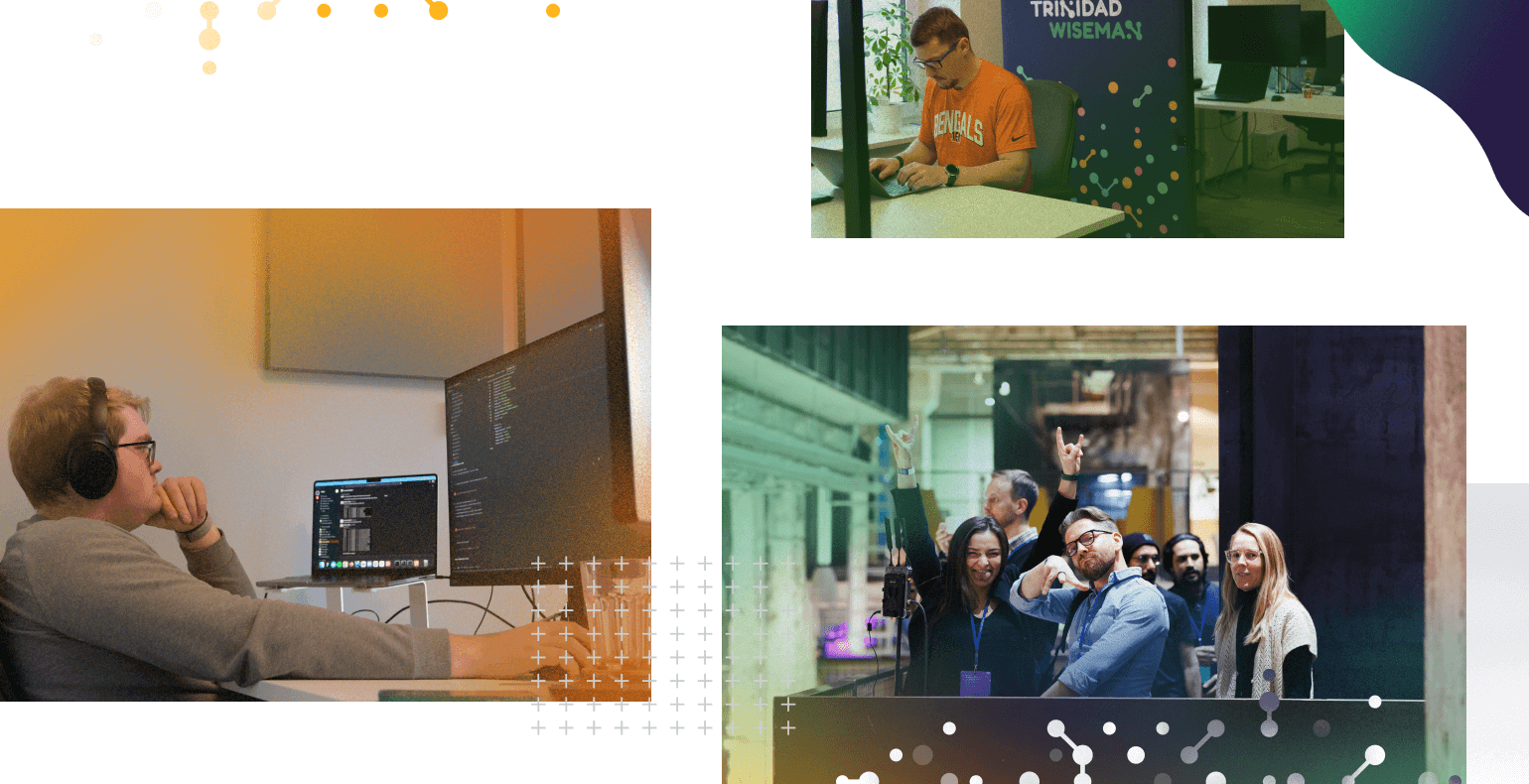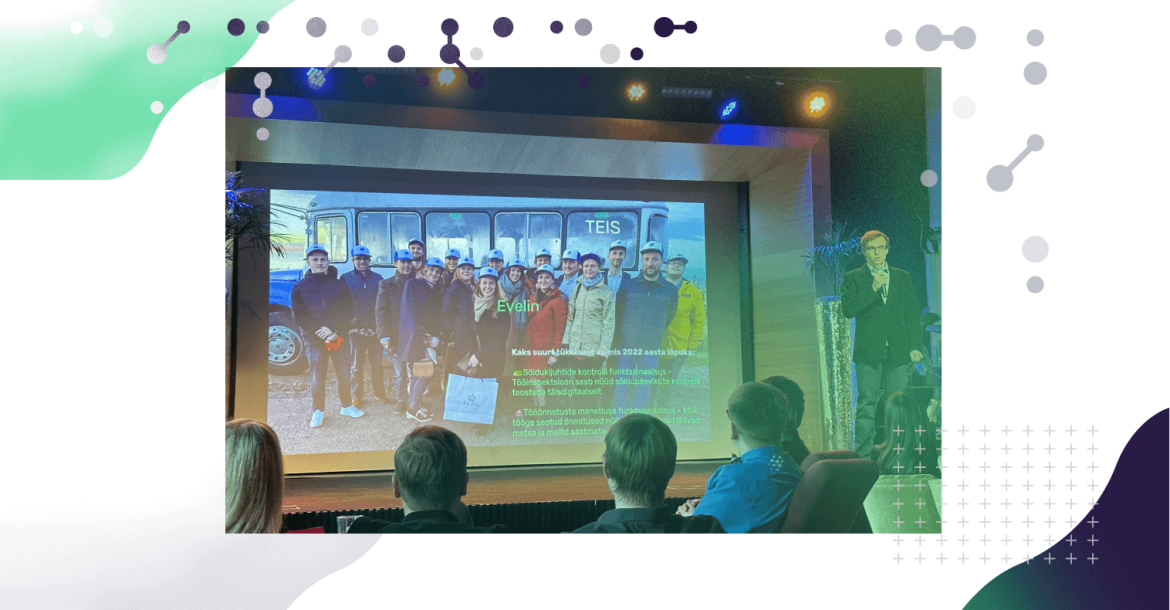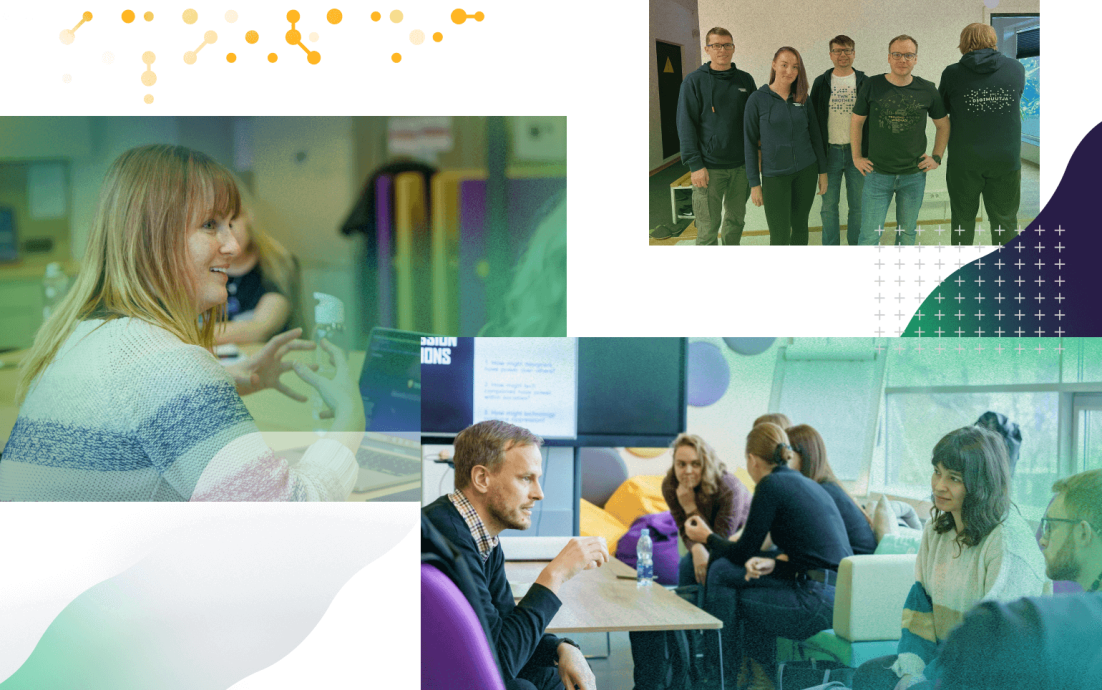Exciting projects with which we have helped improve people's lives
We asked our team leads to recall the most memorable projects of the past year. Let's look at the most exciting projects we've undertaken and how we've improved people's lives with innovative digital solutions.
Digital Transformation Projects
Digital transformation involves introducing digital solutions or replacing older digital solutions with new ones to enhance the efficiency of existing processes and services. Atlassian products and related services support digital transformation. Our team has been actively involved in many digital transformation projects in the past year, including:
Renewal and further development of the Kvatro real estate management product Haldusnet.ee (team leader Silver Jõgi)
Haldusnet is a web-based product that facilitates the everyday activities of apartment associations, owners, and building managers. Our team led by Silver Jõgi analyzed the existing functionality of the Haldusnet.ee portal and designed and developed the user interface to improve the ease of use. The project prioritized the activities of apartment owners and board members of the association, facilitating the availability of information, the integrity of materials, and the workflow of daily activities. The functional and visual changes made were mapped for a purpose and based on direct user feedback, helping all interest groups save time and money daily.
Developments of new functionalities of TEIS (team lead Sulev Kraam)
Working with our long-term partners, TripleDev, TEHIK (Center for Health and Welfare Information Systems), and the Labor Inspectorate, our team led by Sulev Kraam developed two new functionalities of the Working Life Portal (TEIS) to supervise transport companies and modules for processing accidents at work.
The analysis and design process started in 2022 and culminated in the launch of both modules in September and December 2022, respectively. Our team was responsible for full-stack development, including business and system analysis, UI and UX design, back-end and front-end development, testing, and ensuring accessibility through WCAG.
The new functionalities made two essential procedures of the Labor Inspectorate fully digital. As a result, officials and companies affected by these procedures can now save tens and hundreds of hours of work time previously spent on specifying procedural actions, mutual communication, and meetings.
Updating the Eas.ee website (team lead Kadi Rosenthal)
We created a new website for the client based on the web strategy of the EAS and Kredex joint agency (previously called EAS) prepared by Rethink. The updated website gives customers a better understanding of what the EAS and Kredex cooperative institution offers and how to go through the application process more quickly.
Important information is available in a compact form on the web, eliminating the need to search separately in files, laws, and regulations. With everything conveniently found on their website, significantly fewer people turn to the contacts of the joint agency to clarify necessary information.
Creating a student desktop at the University of Tartu (team lead Anniki Jaama)
We mapped out the available technical possibilities of the University of Tartu (TU) from the student's point of view. Based on user research, we prepared a plan on what functionalities could be offered on the desktop of the ÕIS2 functionalities based on the role of the learner. In addition, we developed a partial functionality in the project, the approximate introduction of which is autumn 2023.
The main functionalities of the UT learner's desktop, which gather information from different environments clearly and comfortably for the students, have been created. The information is personalized, based on the learner's role, and conveniently offers the services of various information systems from the homepage of ÕIS. The aim is to simplify students' daily life, contributing to the smoothness of studies and successful completion of programs.
Updating the administrative environment of the Tallinn Tourism website (team lead Silver Jõgi)
We aimed to optimize the user interface, use processes, and functionalities of the existing administrative environment of the Tallinn Tourism website. Our common goal was to develop a new modular CMS environment for the external website visittallinn.ee, which enables efficient management of all public web content such as articles, places to visit, guides, events, Tallinn Card tourist maps, images, documents, and languages.
As a result of our efforts, the Tallinn Strategy Center's tourism department now has an administrative environment with modern visuals and user comfort. We have significantly optimized everyday and complex work processes to save time, money, and human resources.
Development of the STAR volunteer management application and booking system (team lead Sulev Kraam)
Together with our partner TripleDev, we won the STAR2 framework procurement and secured two projects- the development of the volunteer management application and the reservation system. Our team worked with the partner and the client's team to establish the design of the new applications and the micro-presentation layer's logic-based architecture. We agreed on routines and methodologies to ensure efficient development.
In the development stage, we developed the presentation layer using the React.JS framework, system analysis, and design. The volunteer functionality will be available from the beginning of 2023, and the booking system will be completed soon.
Our efforts will help transform STAR, a tool for social workers and institutions providing social services, into a more modern and comfortable working environment. By reducing the time spent on documentation and the organizational side, social workers can focus on helping those in need.
CMDB and user support solution for the University of Tartu (team lead Brigite Helena Sarapuu)
We helped map the University of Tartu's information assets and created a CMDB database to manage and interconnect all the information assets. Additionally, we helped implement the user support solution based on the CMDB, providing a more convenient solution for clients and a better overview and statistics of the applications to the IT department.
Our efforts have laid the foundation for managing all UT's information assets in one place, and we have initiated the development of processes to keep this information up-to-date. The new help desk solution makes life significantly easier for UT employees and students by giving users a good overview of the current state of their appeal.
Service design projects
Service design involves analyzing an organization's processes and service delivery channels to create compelling services for the provider and a good user experience for the customer. At TWN, we apply various techniques, such as UX/UI design, business and system analysis, and various trainings to achieve this goal.
Web usability work of the Rescue Board (team lead Helen Müür)
We systematically organized the information on the board's website, created a more logical menu, and designed a new website prototype.
Who is affected and how? The Rescue Board aims to create a safe and secure living environment for Estonian residents while maintaining a positive and prevention-oriented image. On the updated website, all users can find necessary information about safety at home and elsewhere (e.g. home safety, water safety, fire safety) faster and more logically.
Information System Authority eesti.ee portal projects (team lead Janno Killing-Jaago)
This ongoing project involves creating a personalized desktop for the eesti.ee portal in collaboration with the Information System Authority (RIA) team, Fujitsu, SRINI, and Avatud Lahenduse OÜ. The project aims to provide a unified environment for the people of Estonia, bringing together important personal and state-related information.
In cooperation with the RIA team, we conducted user studies and interviews and studied statistics to map the initial situation and determine the basic needs of users. We then created prototypes, tested them with test users, and designed the appearance of a private person's desktop. Our work with the RIA team has helped us understand the most searched-for e-information about the person himself.
One of the new features we have implemented is the user's personal favourites panel. A list of favourites appears on the desktop, and the user can return to an article or e-service later if desired. This solution allows each user greater personal flexibility on the portal desktop.
Our project will provide a private personalized desktop for the people of Estonia. It will allow them to access data related to basic documents such as identification documents and driver's licenses, vehicle data, and a large part of current health information, among other things. This personalized desktop will make accessing and managing their personal and state-related information easier in a unified environment.
6 projects of the European Environment Agency (team leader Darja Prants)
In cooperation with the European Environment Agency (EEA), we have completed 6 projects in 1.5 years. The first project was to test the existing web user experience, the new search engine and the new information architecture and to search for possible sample solutions on the websites of other European institutions.
For example, how others have solved a situation where the main content of the web is in 3-6 languages, but certain parts of the content is available in 20 languages. In addition, we investigated how PDFs and interactive reports are displayed and used elsewhere.
After collecting ideas, EEA prepared a prototype and a new design, and as a second project, our task was to test the prototype. We collected feedback on usability, navigation, design and content. An important step was testing the mega menu concept, so all critical topics were only one click away.
We tested the final version three months before the website's launch as part of the third project. We involved people from different European countries and tested both on computer and mobile. The interviewees were both environmental experts and ordinary people - EEA's goal is that their field of activity is also understandable to ordinary people.
The fourth project was to test the accessibility of the web and issue the corresponding document. The client has also tested the accessibility but wanted us to do an in-depth audit because our method includes both manual and automatic testing and also brings out specific solutions that can be easily communicated to the development team.
The fifth was a follow-up project - the research revealed that the communication of information and the reading experience could be better, which is why EEA wanted to ask users whether and how they want to consume interactive reports, i.e. what they are looking for, whether they find information, how they use it and whether something is missing. Based on the results, the EEA designers were able to make the navigation, structure, elements and design of interactive reports more user-friendly for the target group.
As the sixth project, we tested the user experience, finding information and reading experience on four thematic platforms. These platforms are separate information systems that are part of the EEA, but focus on a specific topic - e.g. sea, forest, etc. The goal was to map users' wishes and concerns when consuming information to harmonize the user experience on all websites in the near future.
Who is affected and how? EEA consists of 38 member states, EEA has 400 partners and 10 themed information platforms. In addition, the EEA tas is to inform policymakers and ordinary people about the state of the environment. This is linked with the EEA website, which must be convenient, quick, and easy for all parties. In 2022, the EEA website averaged 850,000 visits and 1,350,000 page views monthly.
Creating apps for Nelson (team lead Janno Killing- Jaago)
Nelson is a Finnish tech startup that allows for hotel operations to be streamlined. Among the hotels that use Nelson are Omena Hotels, a leading self-service hotel concept in Scandinavia.
Our task was to create a user-friendly mobile app for comfortable and straightforward room booking and reservation management during the visit. Until that moment, all reservations were made through the website.
In addition to the customer-facing app, we also made an app for the hotel cleaning staff.
Who is affected and how? Through the mobile application, guests can quickly and conveniently change their reservation, extend or shorten their stay, add people to the room, change breakfast preferences, open your room door through the app, etc. The cleaning team app helps to manage the work of the cleaning team and monitor their efficiency, update the status of the rooms, and also for example, to report damages.
Telema mFlow design work (team lead Hardi Niilo)
We started by brainstorming with the client to identify the current problems and the value we want to provide to clients. We then experimented with different designs and prototypes and conducted two rounds of usability testing and interviews. According to the results, we improved the designs and the prototype. When all the details were in place, we created new necessary components for the development and did a pixel review for the development.
Who is affected and how? We helped develop the new software solution "Telema mFlow" in the region, which automates and facilitates coordinating user purchase transaction documents. Telema mFlow automatically compares various purchase-related documents (purchase order, acceptance confirmation and invoice) (3-way matching) and points out the differences so that the user no longer has to look for differences manually.
Analysis of the University of Tartu Study Path application (team lead Kaarel Koosapoeg)
The client desired to formalize the processes associated with the attestation of doctoral students, reporting completion of the residency, and submission of the internship report. We held workshops with sectoral working groups to map and design current and future processes. Subsequently, we described the system's functionalities and designed prototypes. As a result of our work, we completed the initial software development task.
Who is affected and how? Given that the current processes of the University of Tartu (UT) have a deep-rooted history and differ among fields, harmonization was a key aspect of the project. Therefore, we harmonized the processes across all fields. The project's outcome directly or indirectly impacts all UT students, which total approximately 14,000 students, who are required to take at least one practice-based subject during their studies. Furthermore, if UT can provide this application to other universities after its development, the impact can extend even further.
Sounded exciting?
If you have read and feel that working at TWN might be interesting for you, check out our job postings and feel free to contact us at careers@twn.ee! We have vacancies in almost every role, from team leaders to developers, analysts, designers, and testers. Also, read about TWN's operations, strategy, and culture. Find out how we work with hybrid work and payroll and how you can learn and grow at TWN.









